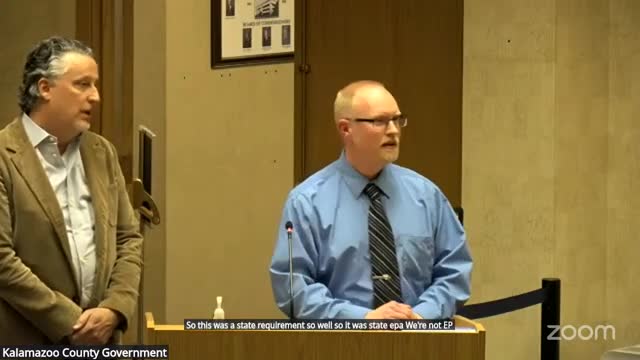Kalamazoo County discusses Brownfield redevelopment plans led by Macy Rose Walters
March 18, 2025 | Kalamazoo County, Michigan
Thanks to Scribe from Workplace AI , all articles about Michigan are free for you to enjoy throughout 2025!

This article was created by AI using a video recording of the meeting. It summarizes the key points discussed, but for full details and context, please refer to the video of the full meeting. Link to Full Meeting
One of the key topics was the recent changes made by the Environmental Protection Agency (EPA) regarding the cancer slope factor for 1,4-dioxane, a chemical contaminant. A representative noted that the EPA's decision to lower the cancer slope factor was based on new studies assessing the toxicity of various chemicals. While local officials expressed some disagreement with the EPA's conclusions, they acknowledged the necessity of complying with state laws that arise from these federal regulations. This change is particularly relevant for residents in affected areas, as it may influence health assessments and remediation efforts.
In response to concerns about local water safety, officials confirmed that well water testing is conducted routinely. Each well is sampled at least once a year, with additional testing for wells that show concerning results. This proactive approach aims to ensure the safety of drinking water for residents, particularly in areas near known contamination sites.
The meeting also featured a presentation from Pavilion Investors LLC regarding a Brownfield redevelopment plan. Macy Rose Walters, the Brownfield Redevelopment Administrator, outlined plans for two parcels of land intended for housing development. The presentation emphasized the importance of revitalizing contaminated sites to promote economic growth while ensuring environmental safety.
Overall, the discussions at the meeting underscored the county's commitment to addressing environmental health issues and fostering redevelopment. As the community navigates these challenges, the implications of regulatory changes and redevelopment efforts will be closely monitored by both officials and residents alike. The next steps will involve further assessments and community engagement to ensure that development aligns with public health and safety priorities.
Converted from Board of Commissioners Meeting | March 18, 2025 meeting on March 18, 2025
Link to Full Meeting
Comments
View full meeting
This article is based on a recent meeting—watch the full video and explore the complete transcript for deeper insights into the discussion.
View full meeting